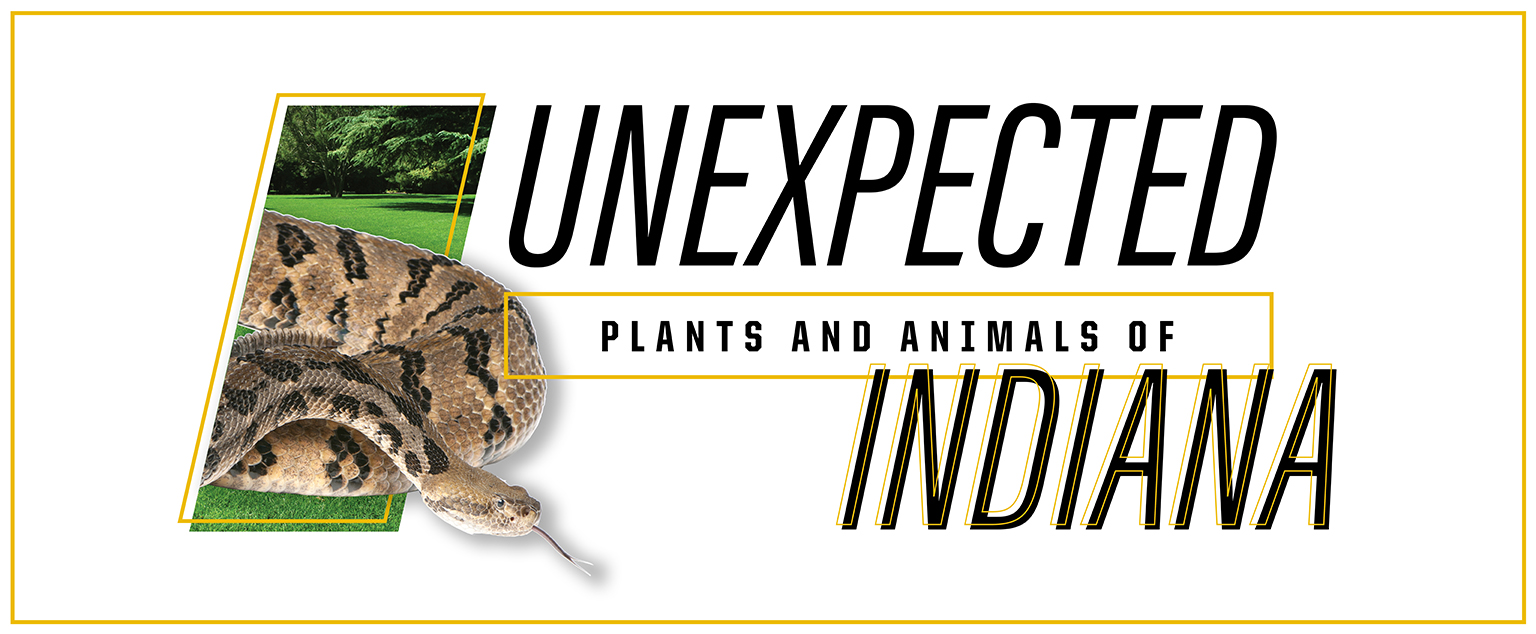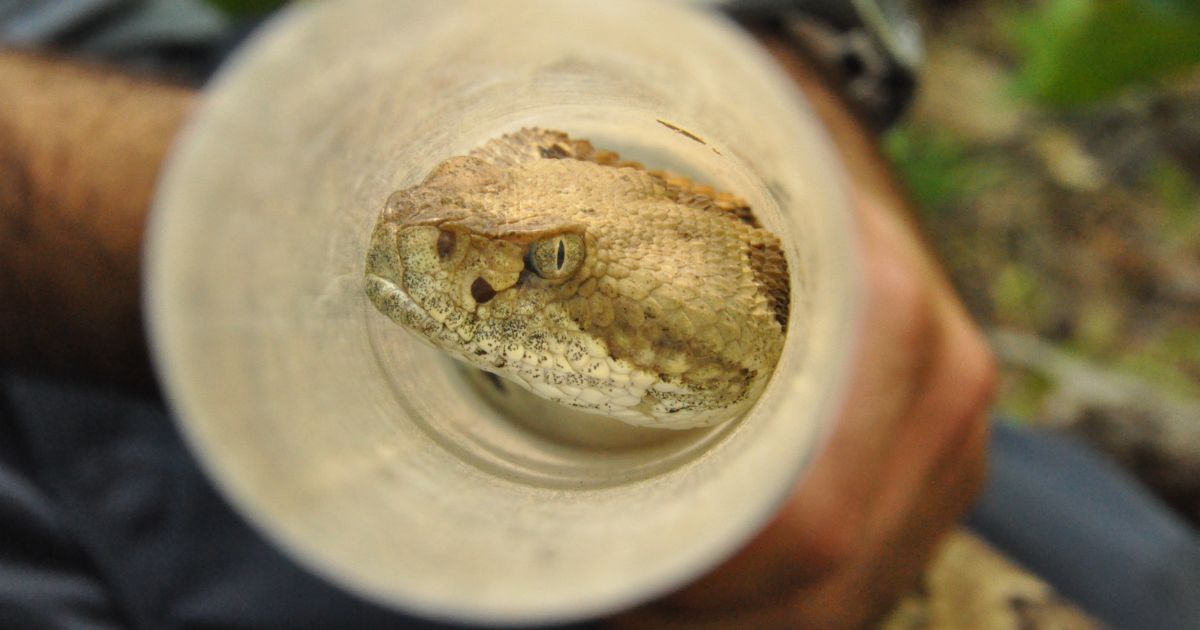Unexpected Plants and Animals of Indiana: Timber Rattlesnake
 Indiana is home to a large variety of plant and animal life, supported by the range of Indiana habitats, from its prairies to verdant hardwood forests.
Discover some of the state’s more surprising species with Purdue Agriculture’s Unexpected Plants and Animals of Indiana series.
Indiana is home to a large variety of plant and animal life, supported by the range of Indiana habitats, from its prairies to verdant hardwood forests.
Discover some of the state’s more surprising species with Purdue Agriculture’s Unexpected Plants and Animals of Indiana series. Timber rattlesnakes are widely distributed across the eastern half of the United States, living as far north as New Hampshire and as far south as Florida. Hilly forests like those found in Brown, Monroe and Morgan County, Indiana suit the secretive lifestyle of the venomous snake. According to Purdue Extension wildlife specialist Brian MacGowan, there is no reliable estimate of the number of Timber rattlesnakes living in Indiana. Sightings are rare but most likely to occur during the hottest parts of the year.
“Late July and August are the peak of their breeding season in Indiana,” said MacGowan. “The males move around a lot more, tracking the scent of the females.”
While they are normally hidden among rocks and brush, rattlesnakes have been observed 20 feet high in trees on rare occasion.
“Chipmunks are their primary food source in Indiana, but larger males eat squirrels and similarly-sized prey,” MacGowan explained. “They even consume songbirds.” A typical adult grows to be between three and five feet in length.
Rattlesnakes are patient hunters. Most often they use their natural camouflage to ambush prey. They inject a lethal venom, potentially strong enough to kill a human if left untreated. The venom contains hemotoxic elements, meaning it can damage or destroy blood vessels and cells.
But just because rattlesnakes are venomous does not mean they create frequent problems for nature lovers. “Timber rattlesnakes are reclusive and are quite unaggressive as far as snakes go,” MacGowan explained. “A lot of the locals in the areas I research don’t realize rattlers live nearby since the snakes keep to themselves.” According to the CDC, roughly 7,500 instances of venomous snakebites are recorded a year in the United States. Of those, about 5 are fatal. During his time as part of the Hardwood Ecosystems Experiment, MacGowan realized that even when looking, finding a rattlesnake is not an easy task.
“Rattlesnakes weren’t originally going to be studied in the project because we didn’t expect to find enough to make it worth our while. When our team first started searching for them, it took over 100 man-hours to find our first one. It’s difficult when you don’t know where their dens are.” To help, MacGowan reached out to Steve Thompson from Purdue’s College of Veterinary Medicine.
“When we found Timber rattlesnakes, the DNR officer in Bloomington held them at their facility. Dr. Thompson and his team drove down and implanted radio transmitters in the snakes.” MacGowan and his technicians cared for the rattlesnakes for three days following their surgery before releasing them to the locations they were caught. With the newly implanted devices, he tracked them to their dens and found additional snakes.
“Many people dislike snakes, but every animal has its role to play in nature,” noted MacGowan. “But even beyond their importance in the food chain, there have been some interesting findings regarding rattlesnakes’ venom.”
Researchers have been intrigued by the way their venom targets the circulatory system and specific cells. Some hope studying the components of venom will lead to advances in the treatment of strokes, heart attacks and cancer.
“For example, chemotherapy affects a lot of the body,” MacGowan explained. “It is hard on most cells, not just cancer cells. The treatments scientists are working on focus specifically on cancer cells, leaving everything else alone.”
If successful, the advances may help rattlesnakes shed some of the negativity commonly felt toward them.







